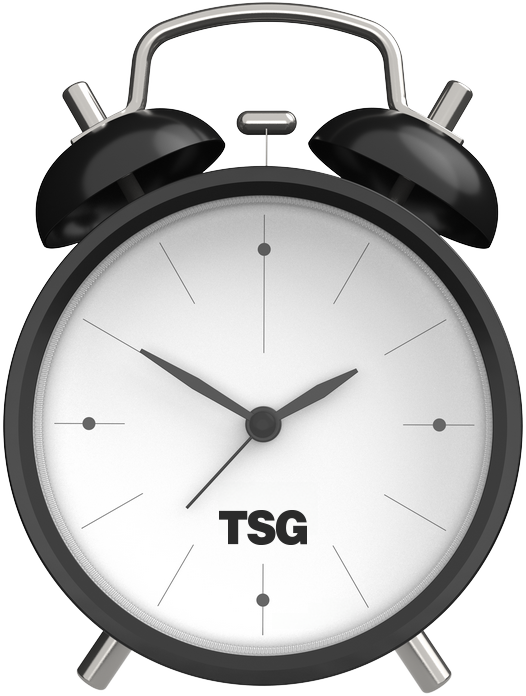To sync your goals with limited time, start by prioritizing tasks using the Eisenhower Matrix to distinguish urgent from important duties. Incorporate flexible scheduling, allowing you to adapt monthly and weekly plans based on priority shifts. Regularly review your progress, adjusting strategies to stay on track. By adopting these methods, you’ll guarantee your goals align with the available time, setting the stage for more insights on maintaining this balance. Additionally, consider implementing time-blocking techniques for focused work sessions, minimizing distractions during these intervals. Self-reflection at the end of each week can help you assess what worked and what didn’t, further refining your approach. Ultimately, mastering goal prioritization techniques will empower you to manage your time effectively and enhance your overall productivity and satisfaction in achieving your objectives.
Mastering Goal Alignment With Limited Time
When you’re short on time, syncing your goals isn’t about doing everything—it’s about doing the right things with purpose. Let’s explore how to support your goal-setting strategy with effective planning, structure, and real-life awareness.
Understand the Types of Goals You’re Setting
Not all goals are created equal. Some are personal, others professional. Some are vague, while others follow the SMART goals format. Understanding the types of goals—long-term and short-term goals, skills-based, or performance-driven—helps you decide what fits your current timeline.
Applying the SMART acronym (Specific, Measurable, Achievable, Relevant, Time-bound) makes your goals more actionable. For example, “Improve my career” is unclear, but “Complete a leadership course within 6 weeks” gives you structure and urgency.
Align Goals With Your Reality
Your time, energy, and mental focus are limited. The key is to organize your tasks and allocate your resources based on reality, not idealism. High performance doesn’t come from chasing everything but from doing a few key things well.
Think about what part of your goal can be started now, even if you don’t have room for the whole plan. Break your goal into manageable pieces, and set mini-deadlines to create sense and rhythm in your schedule.
Learn From Others and Use Proven Templates
You don’t need to start from scratch. Plenty of people have already achieved what you’re aiming for. Research examples, case studies, or templates from others in your career or personal circle.
A friend could manage a side project while working full-time. Someone in your company may have tips for juggling multiple tasks. These experiences give you insights to help you execute smarter, not harder.
Look for real goals examples that mirror your situation. There’s no shame in using a proven template to get started—it saves time and increases your chances of success.
3 Ways to Sync Goals With Limited Time
Whether you’re advancing your career, launching a company, or improving your relationships, time is always limited. But syncing your goals with the amount of time you have isn’t impossible—it just takes smart, strategic planning. Here are three effective ways to align your goals when time is short.
1. Prioritizing Tasks for Maximum Impact
To maximize your productivity, start by evaluating the urgency and importance of each task, focusing primarily on those that propel you toward your 12-week goals. Use the Eisenhower Matrix to categorize tasks, guaranteeing you’re not wasting time on what doesn’t drive your personal and professional success. Limiting your goals to 1-3 will avoid feeling overwhelmed and maintain a clearer focus. Incorporate time blocks into your schedule to work solely on these high-priority tasks. This method helps you prioritize tasks effectively and allows you to achieve your goals in less time. Regularly review your progress, adjusting functions to stay on track and ascertain that every effort aligns with your defined objectives.
2. Implementing Flexible Scheduling Techniques
While shifting from prioritizing tasks, it’s essential to implement flexible scheduling techniques to adapt to your fluctuating daily demands and long-term goals. By integrating these strategies, you’ll enhance your time management and maintain focus on what truly matters. Here’s how to effectively spend your time:
- Monthly Planning: Identify your busiest periods and set boundaries to protect free time for deep work.
- Weekly Bridging: Translate broader objectives into weekly to-do lists to guarantee alignment with your long-term goals.
- Daily Execution: Focus on completing key tasks from your to-do list; avoid adding new goals.
- Actionable Steps: Break large goals into manageable tasks to prevent feeling overwhelmed.
- Set Boundaries: Dedicate specific times for interruptions, making sure they don’t derail your daily planning and progress.
3. Regular Review and Adjustment of Goals

As you integrate flexible scheduling techniques, it’s important to also regularly review and adjust your goals to guarantee they remain in sync with your evolving priorities. Setting aside weekly time to assess your progress allows you to pinpoint strengths and weaknesses in managing goals. This review process is vital; it helps you reflect on setbacks and successes, inform your future strategies, and foster continuous improvement. Utilizing an effective scorekeeping method, where you calculate your completion percentage, adds a layer of accountability and highlights areas needing more attention. By consistently adjusting your goals based on these evaluations, you enhance your overall effectiveness and keep driving forward toward your aspirations.
Frequently Asked Questions
What Are the 5 R’s of Goal Setting?
You’re asking about the 5 R’s of goal setting, which are essential for crafting effective goals. They include Relevant, ensuring your goals align with your larger ambitions; Realistic, considering your current resources; Results-oriented, focusing on specific outcomes; Rewarding, providing motivation to keep you engaged; and Time-bound, setting a clear deadline. These principles help you set goals that aren’t just aspirational but are actionable and aligned with your objectives.
How Do You Balance Short-Term and Long-Term Goals?
Break your larger goals into smaller, manageable tasks to balance your short-term and long-term goals. Prioritize these tasks based on how well they align with your ultimate objectives. Regularly adjust your goals to accommodate any changes in your situation. Use time-blocking to dedicate specific times for different tasks, enhancing focus and efficiency. Don’t forget to celebrate your small victories to stay motivated on your journey towards your long-term aspirations.
What Are the 5 C’s of Goal Setting?
You’ve asked about the 5 C’s of goal setting: Clarity, Challenge, Commitment, Consistency, and Collaboration. Clarity guarantees you know precisely what you’re aiming for. Challenge pushes you to stretch beyond your usual limits. Commitment demands your dedication. Consistency requires regular effort towards your goals. Finally, collaboration involves leveraging support from others and boosting both motivation and success. Together, they form a robust framework for achieving your objectives.
What Are the 5 P’s of Goal Setting?
You might wonder about the 5 P’s of goal setting, which guarantee you set effective and achievable targets. They include Purpose, Positive, Present, Personal, and Possible. These principles help you understand your motivations, focus on achievable outcomes, phrase your goals as if they’re already happening, tailor them to your values, and keep them within the domain of possibility. Embracing these can greatly enhance your goal-setting strategy.
Conclusion
You’ve got the tools to make the most of your time now. Start by prioritizing tasks that pack the biggest punch. Embrace flexible scheduling to adapt as your day unfolds. And don’t forget, regularly tweaking your goals keeps you on track and responsive to change. With these strategies, you’re not just keeping up but setting the pace. Immerse yourself, adjust as you go, and watch how much more you can achieve with time.




















